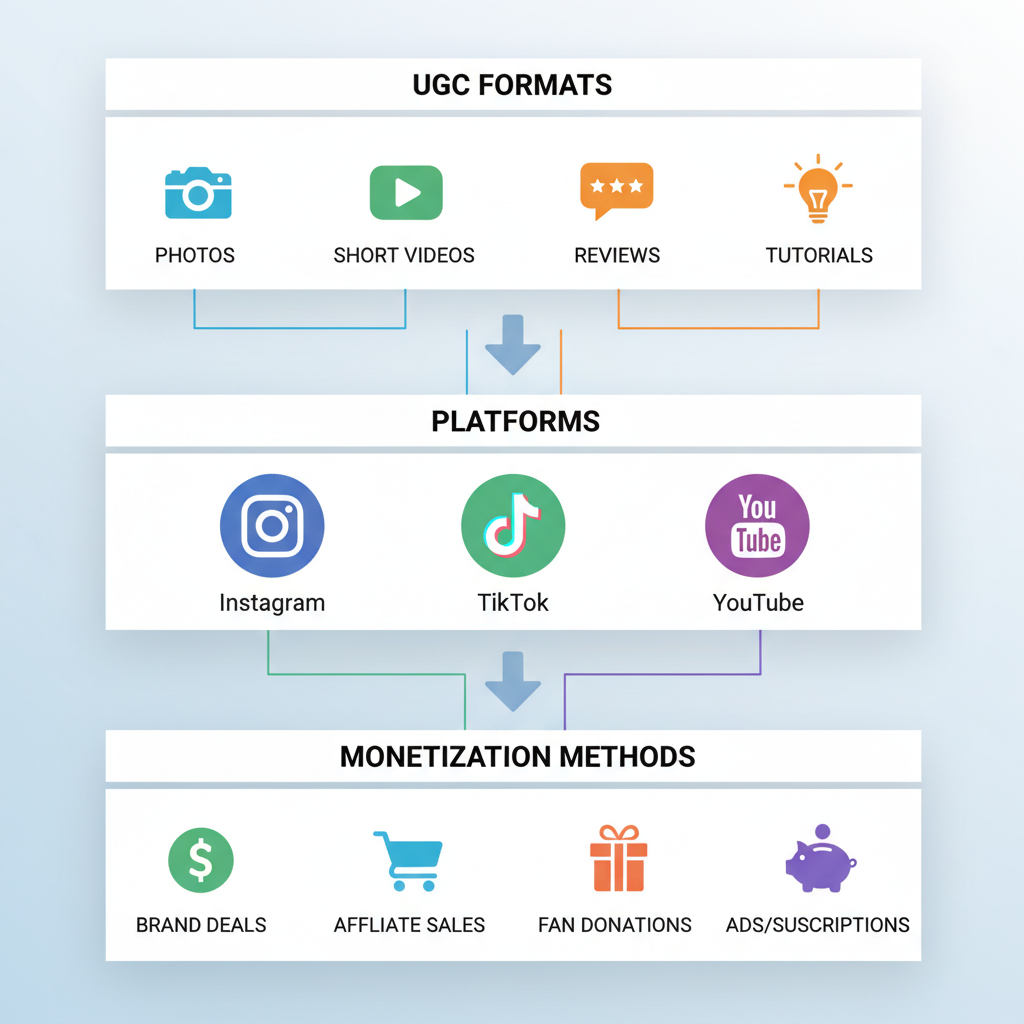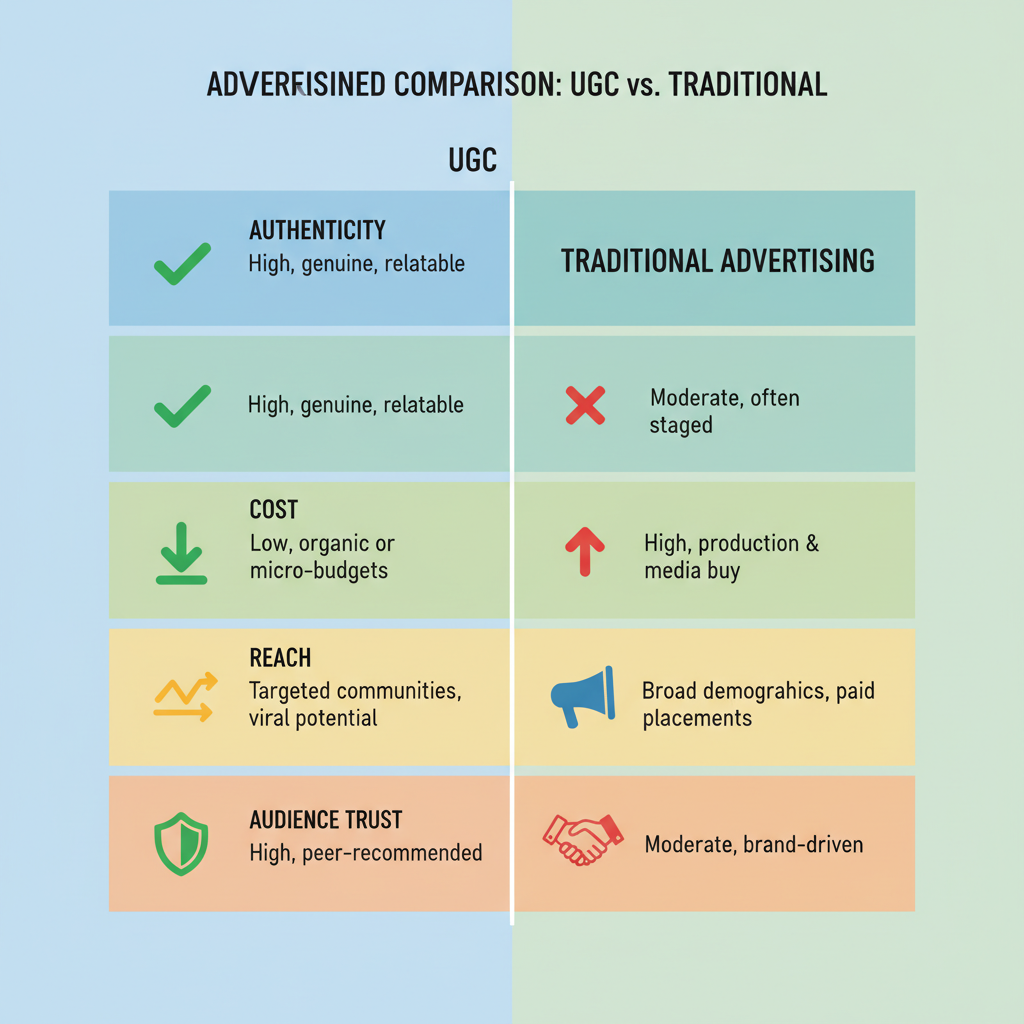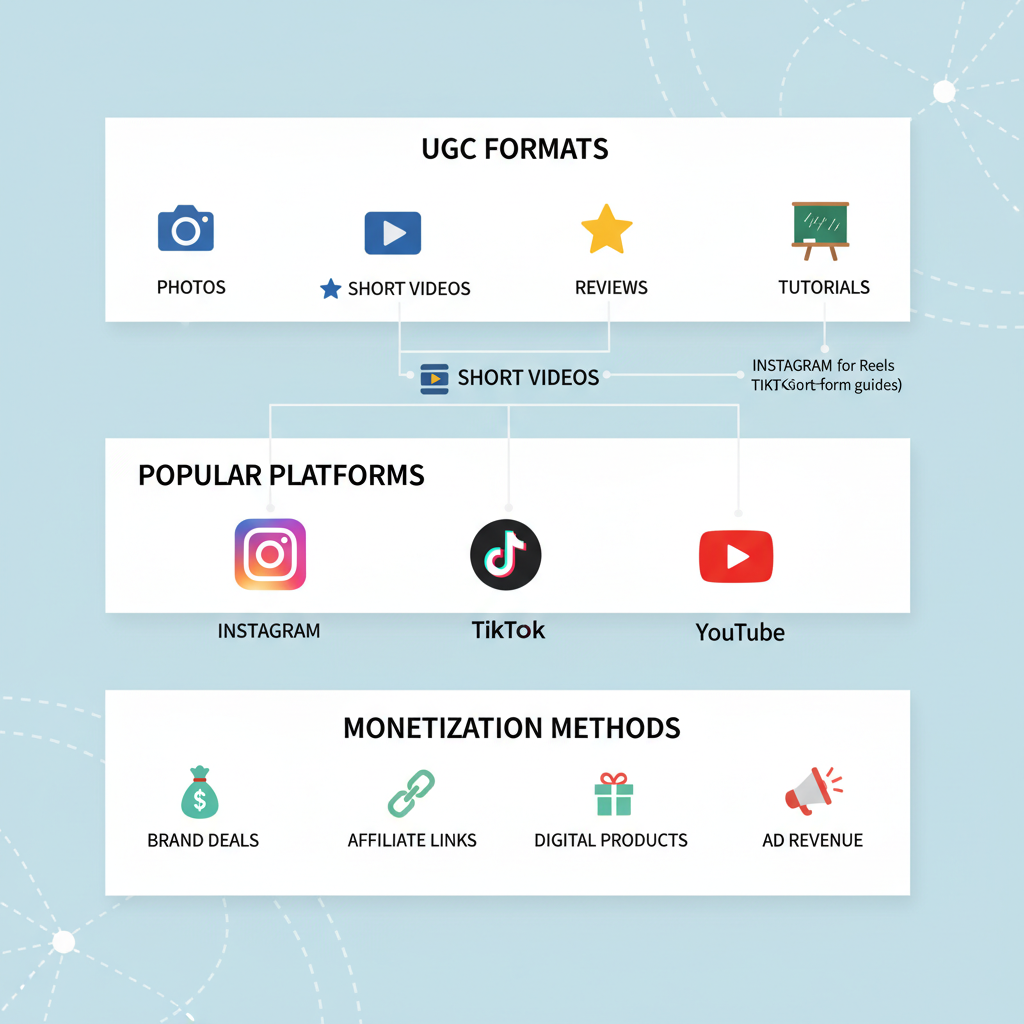Is UGC Legit for Brands and Creators? Guide and Examples
Learn what UGC is, why brands value it, common scams, and steps creators and businesses can take to ensure safe, legitimate collaborations.

Is UGC Legit for Brands and Creators? An Updated Guide with Examples
User-generated content (UGC) has quickly become a cornerstone of modern digital marketing. With its blend of authenticity, social proof, and cost-effectiveness, it's no wonder brands and creators are embracing the trend. However, with its rapid growth has come increased concern around scams, unclear contracts, and content theft. In this guide, we'll explore what UGC is, why it's valued, potential legitimacy issues, and proven steps both brands and creators can take to ensure safe, successful collaborations.
What Is UGC?
User-generated content refers to any media created by everyday individuals rather than a brand’s in-house marketing team. It can take many forms, including:
- Photos: Lifestyle shots, product images, event pictures.
- Videos: Tutorials, reviews, behind-the-scenes clips.
- Text-based content: Blog posts, comments, social media captions.
- Reviews & Testimonials: Written or video feedback from customers.
UGC is used across industries—from fashion and beauty to tech and dining—and can be published on social media, embedded on websites, or repurposed in paid ads.

Main Formats of UGC
| Format | Description | Common Platforms |
|---|---|---|
| Photo | Authentic product or lifestyle imagery | Instagram, Pinterest |
| Video | Short-form reviews, tutorials, or demonstrations | TikTok, YouTube, Instagram Reels |
| Text | Written testimonies, blog posts | Twitter/X, Medium, company blogs |
| Audio | Podcast reviews, voice testimonials | Spotify, Clubhouse |
Why Brands Value UGC Over Traditional Ads
UGC offers distinct advantages for marketers:
- Authenticity — Consumers trust relatable content created by real people.
- Social Proof — Peer reviews influence purchase decisions far more than brand slogans.
- Higher Engagement — Algorithms reward organic-style creative over overt ads.
- Cost Efficiency — Partnering with creators or repurposing customer content is often cheaper than full-scale ad productions.
By integrating UGC into campaigns, brands can spark genuine interest that feels less intrusive than traditional advertising.
Who Are UGC Creators?
UGC creators are individuals producing high-quality content for brands without necessarily owning large social followings. Unlike influencers, their core value lies in content creation skills rather than their audience size.
How UGC Creators Get Paid
- Flat Fee — Set payment per video, photo set, or testimonial.
- Per Deliverable — A fixed rate for each asset type delivered.
- Licensing Fees — Ongoing payment for rights to use created content.
Common Platforms for UGC Creation
- TikTok
- YouTube
- Fiverr
- Upwork
- Specialized UGC marketplaces

Legitimacy Concerns in the UGC Space
With UGC monetization booming, scams and unethical practices have emerged. Common threats include:
- Fake Accounts posing as brands or agencies.
- Misleading Agencies promising exposure without payment.
- Unclear Contracts leading to disputes over rights and usage.
- Content Theft — using creators’ work without consent.
Such risks feed into the question many ask: is UGC legit?
Signs of a Legitimate UGC Opportunity
Whether you are a creator or a brand, legitimate collaborations typically have:
- Clear Contracts — Outlined scope, usage rights, payment schedule.
- Transparent Communication — Professional channels and identifiable contacts.
- Portfolio Review — Evidence of prior successful collaborations.
- Positive Testimonials from verified partners.
- Defined Deliverables — Detailed asset requirements without vague promises.

Risks in UGC Collaborations
Even with legitimate offers, challenges can arise:
- Copyright Issues from unlicensed music, images, or footage.
- Delayed or Non-Payment in breach of contract.
- Content Overuse beyond agreed usage without extra compensation.
- Reputation Harm from associating with unethical campaigns.
Verification Steps for Brands and Creators
To protect all parties involved:
- Research Agencies/Brands via LinkedIn, official sites, and registries.
- Check Testimonials by contacting past collaborators directly.
- Use Payment Escrow on platforms like Upwork to secure funds.
- Insist on Written Agreements instead of verbal arrangements.
- Review Licensing Rights to confirm allowable uses and prevent misuse.
Example Code Snippet for Verification Checklist
[ ] Verify brand registration
[ ] Request signed contract
[ ] Confirm payment method
[ ] Search for scam reports
[ ] Clarify asset usage rights
[ ] Save all correspondenceReal Case Studies of Legit UGC Campaigns
1. Beauty Brand TikTok Challenge
A skincare company engaged five UGC creators to produce authentic routine videos. The campaign delivered 3 million views and increased sales by 15% in one month, supported by clear contracts and prompt payments.
2. Tech Product Unboxing Series
A gadget brand collaborated through Fiverr to produce unboxing videos for YouTube Ads. Explicit licensing terms and upfront payments led to engagement levels exceeding traditional campaigns.
3. Local Restaurant Instagram Reviews
A restaurant chain incentivized customers to share dining photos for social media, offering vouchers as compensation. This boosted repeat visits by 25%.
Tips for Safely Starting With UGC
For Creators:
- Build a portfolio before pitching.
- Use secure payment platforms.
- Avoid sending high-resolution files before partial payment.
For Brands:
- Vet creators by assessing prior work.
- Start with smaller trial projects.
- Define content lifespan and channels in writing.
Actionable Checklist for Confirming UGC Legitimacy
- Sign a contract to protect usage rights and payments.
- Verify identities of companies and creators.
- Leverage trusted platforms such as Fiverr and Upwork.
- Assess past work before committing.
- Begin with smaller collaborations and upscale if satisfied.
- Secure payment methods via escrow or upfront fees.
---
Summary & Next Steps
While the UGC marketplace has its share of scammers, it remains a legitimate and powerful marketing strategy when approached with diligence. Brands can tap into genuine engagement, and creators can monetize their skills—provided both parties follow robust verification and contractual measures. If you're ready to explore the authenticity, reach, and ROI of user-generated content, start small, protect your rights, and grow from proven successes.
Ready to explore UGC opportunities? Begin by building relationships with vetted creators or brands, and let authentic storytelling fuel your next campaign.




